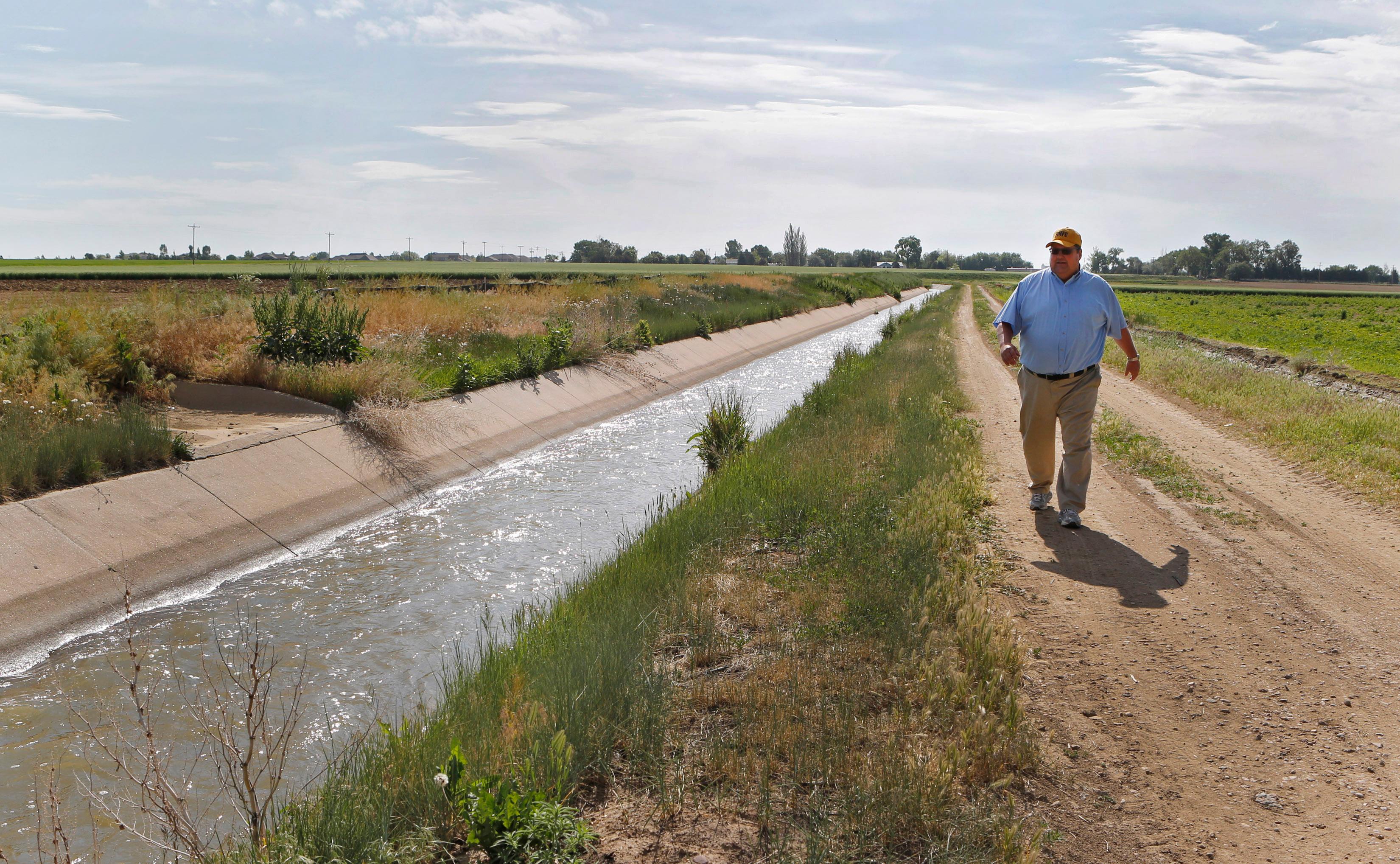
A draft of Colorado's first statewide water plan hits Gov. John Hickenlooper's desk on Wednesday. A variety of groups have been working on it for approximately 18 months.
Hickenlooper ordered the plan be written following predictions that stated Colorado won't have enough water to provide if the population doubles as expected by 2050. That could mean some farmland would dry up, there'd be less supply to Front Range cities, and a choke on industries that depend on water. Even recreational water rafting could take a hit.
Population, water imbalance
The state's water plan is a collection of local plans, which don't always agree. Those differences are magnified and at the heart of the water planning now taking place because of an inherent conundrum unique to Colorado. James Ecklund, who is heading up the state’s water plan, explained the issue on "Colorado Matters" in April.
“If you think of Colorado as a rectangle and you draw a line right down the middle of that rectangle, 80 percent of the water falls on the left side of that line, and 87 percent of the people are on the right side of that line," he said.
"The water has to get where the people are if we want to sustain ... growth along the Front Range," Ecklund added.
Right now, Front Range cities get most of their water from the state's Western Slope through channels and tunnels that run over -- or through -- the Continental Divide. In the draft water plan, roundtables on the east and west sides of the divide disagree about whether sending more water from one side to the other will be necessary in future years.
Sean Cronin chairs the South Platte Basin Roundtable, based in Longmont. That entity worked with a roundtable from Metro Denver on its section of the water plan. He says conservation alone won't save Colorado enough water to feed growing cities, the agricultural economy, and other needs on the eastern side of the state.
"We feel like the growth that's going to occur on the South Platte over the next 50 years will demand additional water supplies," he says.
The South Platte Basin group and the Denver Metro area's roundtable propose bringing more water to the Front Range from the West Slope only in so-called "wet" years.
"The position of the Front Range is that in certain times of year, in certain years, there are large peaks, such as last year, there was significant amounts of water," Cronin says.
If there is no additional supply, Cronin and the South Platte basin group he heads are concerned that more of the water currently used by agricultural producers would be sold to the cities.
"And we feel as though irrigated agriculture is a critical piece of Colorado's overall economy and quality of life statewide and to ensure that will be around for generations, we must provide an additional supply of water for growing cities," he says.
Western Slope fears losing water
But Jim Pokrandt, who chairs the Colorado River Basin Roundtable, based in Glenwood Springs, says that might not be possible.
"Transmountain diversions are 100 percent depletive," Pokrandt says. "All the water that's going from the West to the East is gone forever" for the people and environment on the western side. Pokrandt says that can be harmful for the environment and for agriculture in western Colorado.
He adds that diverting water to the Front Range already hurts western Colorado, and the more the eastern cities grow, the more harmful those diversions will be, particularly if the rivers are also naturally depleted by climate change.

Moreover, Pokrandt argues that even if more water is diverted over the Continental Divide in Colorado, there's no guarantee that will mean East Slope agricultural producers will hold onto all of the water they currently get.
"That connection is largely theoretical," he says.
But, Pokrandt says the acknowledgment from the Front Range communities that more water would only be diverted in wet years is significant, although it's not set in stone.
"In concept, that's a huge breakthrough," he says.
Like Pokrandt, Cronin says he wants to maintain natural landscapes throughout the state.
"We know that folks want to live here for the quality of life, the great weather, the mountain experience," he says. "What we're trying to do is strike a balance."
Each basin roundtable contributing to the draft water plan, as well as the state offices that are involved, agree that conserving water is an essential part of the state's plan. Cronin says the water plan group doesn't have the authority to mandate water conservation, and the draft plan doesn't call on the state legislature to mandate it, either.
Culture change needed
Pokrandt says the West Slope basin roundtables are advocating for more aggressive conservation goals than the basins on the Front Range. And, he says the biggest opportunities for conservation in urban Colorado are in outdoor irrigation.
"We just can't keep engineering our next generation of subdivisions like they're in suburban Chicago or North Carolina or back east where they get 40 inches of rain, because we don't," he says.
"A lot of it is going to be a culture change," he adds.
Cronin points to market forces, too. He says as the price of water goes up, developers won't put in as much grass in new developments, for example.
Cronin doesn't think this water plan is the right place to put firm water conservation goals, as environmental groups have called for recently.
Pokrandt wants a number goal put into the plan, though he acknowledges that there has to be flexibility. In communities that have seasonal population changes, or an unusually large supply of water but low population, the same savings mandated in Denver wouldn't apply, he says.
A final draft of the state's first water plan is due in December 2015.
For more on water in Colorado, listen to our series "Ripple Effect," about the intersection of drilling and water.









